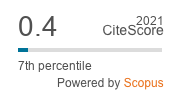Franklinothrips vespiformis Crawford (Thysanoptera: Aeolothripidae), a potential predator of the tea thrips, Scirtothrips bispinosus Bagnall in south Indian tea plantations
DOI:
https://doi.org/10.33307/entomon.v44i1.425Abstract
During the surveys carried out for natural enemies of Scirtothrips bispinosus Bagnall in tea plantations, the predatory thrips Franklinothrips vespiformis Crawford was found preying on tea thrips in High ranges, Nilgiris and Central Travancore regions of south India. The life history and predatory potential of F. vespiformis were studied in the laboratory by providing different life stages of S. bispinosus as feed. Studies on life history revealed that F. vespiformis had six life stages with a greater potential for population increase at 25 °C. Adult stages of F. vespiformis, consumed more number of thrips than the larval instars. However, per day consumption was more in second instar larva than adult and first instar. All the active life stages of F. vespiformis except the non-feeding pupa preferred mostly first instar larvae for feeding followed by the second instar. Field observations revealed that increase in predator population coincided with the population increase of prey species. The results of the present study indicate F. vespiformis as an efficient predator against S. bispinosus and therefore it could be explored as a potential biocontrol agent in the management of tea thrips.


